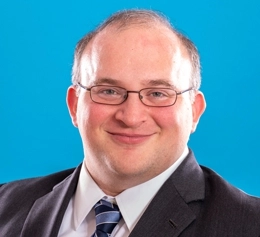AI is catalyzing a sea change across our economy, particularly as it relates to innovation. It is critical that our laws and institutions keep pace with this rapid transformation. Fortunately, patent law is already relatively well equipped to deal with the AI revolution. Current statutes, existing rules, and a long history of case law are mostly sufficient to handle inventions that improve the functioning of AI and inventions that are developed with AI’s assistance, and there is no reason to believe that the law could or should provide patent protections to inventions created solely by AI.
Still, in an innovation environment that is shifting so rapidly, it is valuable for the U.S. Patent and Trademark Office (USPTOUnited States Patent and Trademark Office. See also PTO.) to clearly articulate the policy it will employ when examining inventions assisted by AI, which it did in recently-released guidance.
The guidance strikes a good balance. The USPTOUnited States Patent and Trademark Office. See also PTO. makes clear that the existing rules on inventorship still govern AI-related issues, while leaving scope for human inventors to be assisted by AI tools as long as they make a “significant human contribution.” The guidance also makes clear that AI on its own is not a permissible inventor.
First, it is reassuring to see the USPTOUnited States Patent and Trademark Office. See also PTO. reiterate that only natural persons can be inventors, meaning that AI cannot. This determination was upheld by the Federal CircuitSee CAFC in 2022, in Thaler v. Vidal, and there is no reason to deviate from it.
It is common-sense that an AI cannot be a sole inventor entitled to a patent. The patent statute says that a “person shall be entitled to a patent” and clearly states that inventors are “individuals.” An inventor is also required to sign an oath or declaration–a task an artificial entity is neither capable of nor permitted to do. Additionally, as explained in a joint comment submitted to the USPTOUnited States Patent and Trademark Office. See also PTO. by CCIA and The Public Innovation Project, any invention that is completely the work of AI should not be patentableEligible to be patented. To be patent-eligible, an invention must fall into the categories listed in 35 U.S.C. § 101 (i.e., process, machine, manufacture, or composition of matter) and cannot be an abstract idea or a law of nature. because it would, by definition, fail 35 U.S.C. §103’s non-obvious requirement. The non-obvious requirement says that a patent cannot be obtained on a potential invention if it “would have been obvious to a person having ordinary skill in the art.” While AI is groundbreaking, AI-systems are trained on preexisting public information, meaning that any outputs they create are reconstructions of preexisting prior artPrior art is the knowledge in the field of a patent that was publicly available before the patent was filed.. Further, if any person of ordinary skill could use an AI to generate an idea, that idea is clearly within the “ordinary skill in the art.” AI-generated outputs should, therefore, be deemed obvious and unpatentable. Only when a significant human contribution is made could the combined invention merit a patent.
Questions of obviousness aside, the USPTOUnited States Patent and Trademark Office. See also PTO. guidance properly recognizes that “while AI systems and other non-natural persons cannot be listed as inventors on patent applications or patents, the use of an AI system by a natural person(s) does not preclude a natural person(s) from qualifying as an inventor (or joint inventors) if the natural person(s) significantly contributed to the claimed invention.”
This is the correct balance to strike. When AI is used as a tool–similar to a computer, a calculator, or a gene sequencing device–but a human (or humans) are responsible for the essential conceptual work, a patent on the resulting invention should list the human as the inventor without also listing the tools they used as co-inventors. This is wholly consistent with current law and practices–no one lists a calculator as a co-inventor even if they used one in devising their invention.
In the USPTO’s guidance, the agency recognizes that the phrase “significant contribution” is doing a lot of the heavy lifting in determining whether AI-assisted inventions are eligible to be patented and acknowledges that “determining whether a natural person’s contribution in AI-assisted inventions is significant may be difficult to ascertain.” As a result, the guidance provides a non-exhaustive list of five principles that can help inform whether a human made a significant contribution to an invention. Those factors (condensed) include:
- A natural person’s use of an AI system in creating an AI-assisted invention does not negate the person’s contributions as an inventor…
- Merely recognizing a problem or having a general goal or research plan to pursue does not rise to the level of conception…However, a significant contribution could be shown by the way the person constructs the prompt in view of a specific problem to elicit a particular solution from the AI system…
- Reducing an invention to practice alone is not a significant contribution that rises to the level of inventorship. Therefore, a natural person who merely recognizes and appreciates the output of an AI system as an invention, particularly when the properties and utilityAn invention must useful to be patentable. Very few inventions are invalidated as lacking utility. Perpetual motion machines, for example, are typically found invalid for lacking utility. of the output are apparent to those of ordinary skill, is not necessarily an inventor. However, a person who takes the output of an AI system and makes a significant contribution to the output to create an invention may be a proper inventor…
- A natural person who develops an essential building block from which the claimed invention is derived may be considered to have provided a significant contribution to the conception of the claimed invention even though the person was not present for or a participant in each activity that led to the conception of the claimed invention…
- Maintaining “intellectual domination” over an AI system does not, on its own, make a person an inventor of any inventions created through the use of the AI system…
As a practical matter, enabling AI-only inventions would have a series of negative side effects, including entities using AI to overwhelm the USPTOUnited States Patent and Trademark Office. See also PTO. with patent applications that do not clear the bar for non-obviousnessA requirement for patentability based on 35 U.S.C. § 103 of the Patent Act. An invention cannot be an obvious variant of something that is already known, that is, the invention must not be obvious to a "person having ordinary skill in the art" (PHOSITA). Also known as an "inventive step" outside the United States. and those patents being used by patent trolls and other entities to discourage competition and innovation. The new guidance correctly protects against these negative outcomes while also “incentiviz[ing] human individuals to invent and thereby promoting progress of science and the useful arts”–an incentive that does not apply to AI.
The principles for AI-assisted invention eligibility give us a good foundation to work from, but the USPTO’s next step should be concrete procedures for requiring applicants to disclose AI assistance in their patent applications. For example, applicants should be required to specifically detail and disclose what contributions were made by the human inventor and what contributions were made by the AI. Because material misrepresentations may render a patent unenforceable, applicants will have a significant incentive to provide accurate information—but only if the USPTOUnited States Patent and Trademark Office. See also PTO. asks for it. This type of transparency has significant ramifications for questions of obviousness and for preventing AI-generated patents from being improperly granted to humans.
The USPTOUnited States Patent and Trademark Office. See also PTO. must also prioritize technical training for examiners in order to ensure that they have expertise in both the relevant subject matter and in AI processes. Alternatively, a new multiple-examiner approach could be taken with respect to AI-assisted patent applications, where these applications are reviewed collaboratively by both a subject matter expert and an examiner with AI expertise. This training and/or additional layer of scrutiny will be necessary to avoid improperly assigning AI-generated patents to humans.
As AI continues to evolve our laws will need to evolve along with it. For now, however, current statute and the USPTOUnited States Patent and Trademark Office. See also PTO. guidance on AI-assisted inventions puts us in a solid position to deal with the challenges and opportunities that we know are coming.

